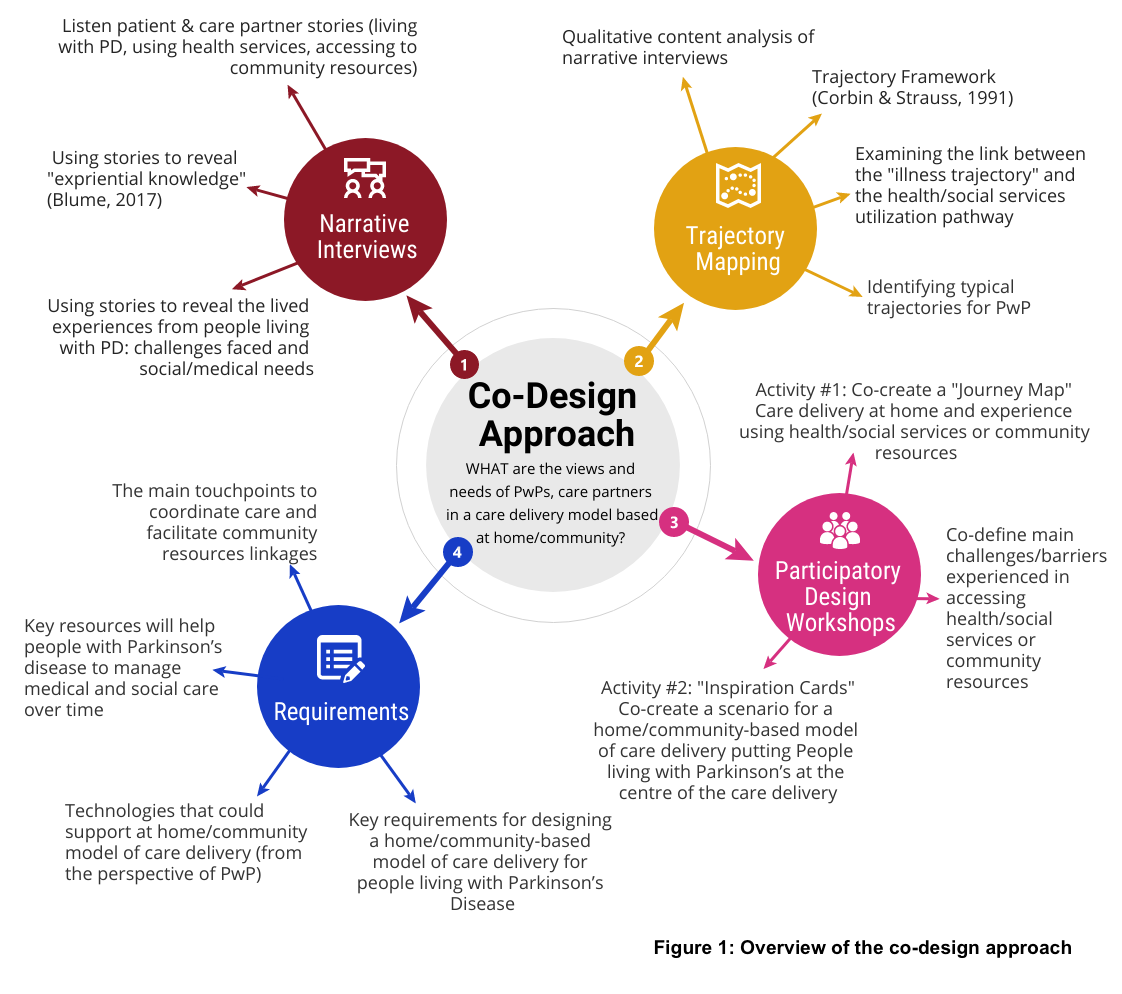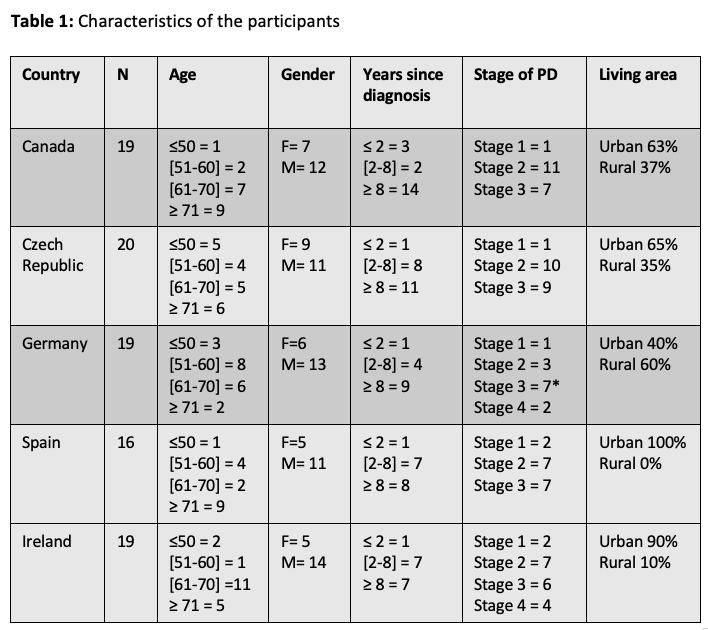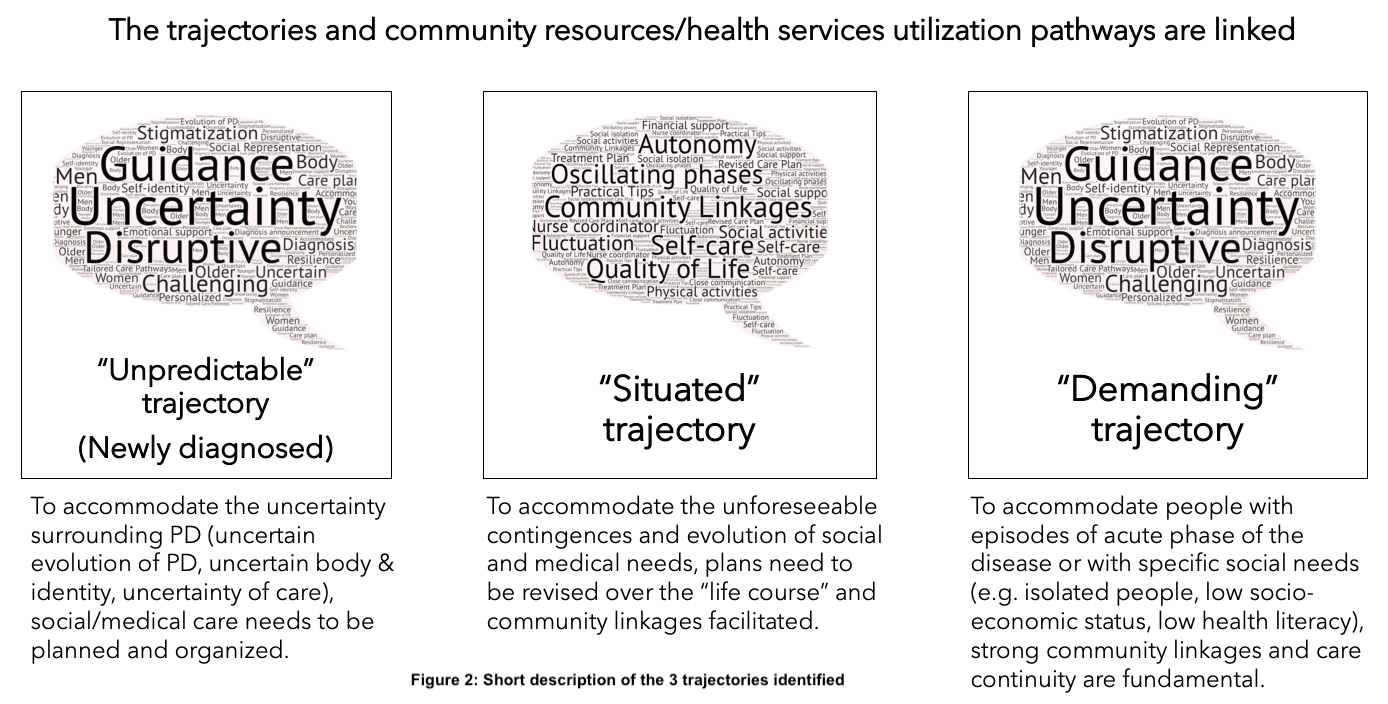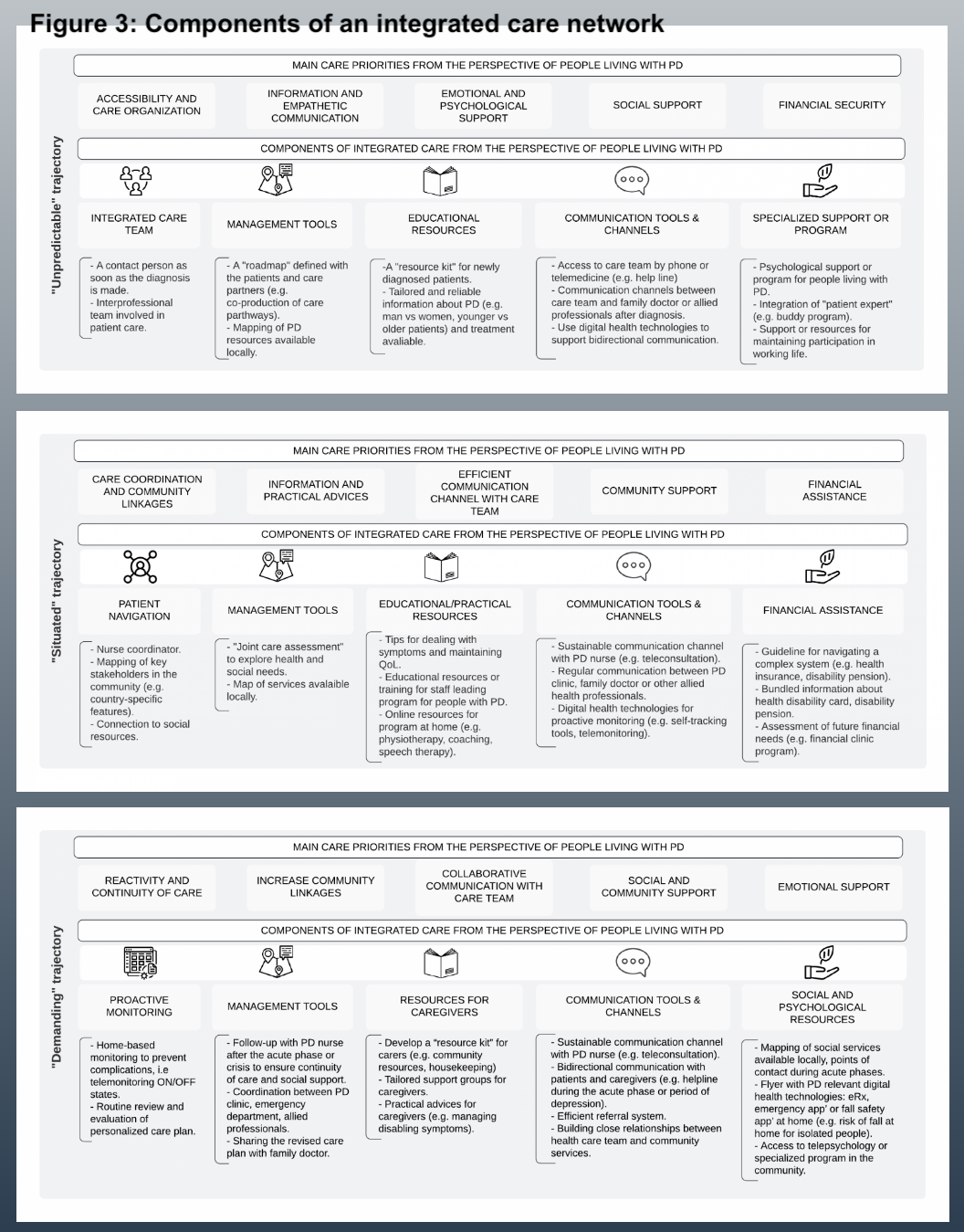Category: Other
Objective: The aim of this study is to provide a better understanding of how patients’ experience could inform the design of an integrated care network for people living with Parkinson’s Disease (PwP). We will present a research consortium, ‘Integrated Parkinson’s Care Networks’ also known as iCARE-PD and a co-design project conducted in five countries (Canada, Czech Republic, Germany, Ireland, Spain).
Background: The complexity of Parkinson’s disease (PD), both in terms of symptom variability between patients and care needs, asks for the implementation of flexible integrated care networks (ICNs) that are easy to adapt to the existing different realities. This requires researchers and clinicians the adoption of innovative approaches that give PwP’s the opportunity to share their experience and use this knowledge to enhance the design of ICNs, such as co-design.
Method: We used a co-design approach involving 4 steps [figure 1]. We have completed the step 1 and 2: Narrative interviews conducted in 5 countries. In total, 93 participants were included in the study [table 1]. A purposeful sampling strategy was used to ensure variability in terms of age, stage of the disease and living areas.
Results: In addition to describe similar care priorities and medical and social care needs in each country, findings reveal 3 common trajectories linked to PwP’s: (a) the ‘unpredictable’ trajectory, specific to newly diagnosed patients; (b) the ‘situated’ trajectory and (c) the ‘demanding’ trajectory [figure 2]. For the 3 trajectories identified, the ICN will have to be set up and bring together key stakeholders, resources and tools in order to support patients and caregivers in managing the uncertainty surrounding PD (the “unpredictable” trajectory), navigating in a “web of care” (the “situated” trajectory) and monitoring the social and medical complications or adverse events and support vulnerable people (the “demanding” trajectory).
Conclusion: Based on the results of our analysis, we are able to generate ideas and hypotheses about the components of an integrated care network that should be discussed, negotiated, and rearranged during participatory design workshops with healthcare providers, patients and caregivers in the five countries involved in the study [figure 3].
To cite this abstract in AMA style:
S. Grosjean, J. Farré Coma, O. Gal, A. Laffan, A. Sendra, J. Stuempel, T. Mestre. How can patients’ trajectories inform the co-design of an integrated care network for people living with Parkinson’s Disease? [abstract]. Mov Disord. 2021; 36 (suppl 1). https://www.mdsabstracts.org/abstract/how-can-patients-trajectories-inform-the-co-design-of-an-integrated-care-network-for-people-living-with-parkinsons-disease/. Accessed April 3, 2025.« Back to MDS Virtual Congress 2021
MDS Abstracts - https://www.mdsabstracts.org/abstract/how-can-patients-trajectories-inform-the-co-design-of-an-integrated-care-network-for-people-living-with-parkinsons-disease/




